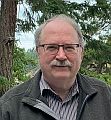LIVING WATER SMART IN BRITISH COLUMBIA: “Water brings people together. It is a natural starting point for any conversation about common interests, and by extension, our shared future. Stories unite us,” stated Kim Stephens, Executive Director, Partnership for Water Sustainability

“In these challenging and unsettling times, it is imperative that we offer hope. Every edition of Waterbucket eNews is built around a conversational interview. We celebrate the leadership of individuals and organizations who are guided by the Living Water Smart vision We start with a compelling quotable quote and delve into the story behind the story because that is what is interesting. And relevant. We all learn through stories. During the past 3-month period, the Partnership has published 11 feature stories. This edition constitutes our season in review. We resume publication in mid-January. There are so many stories still to share,” stated Kim Stephens.










